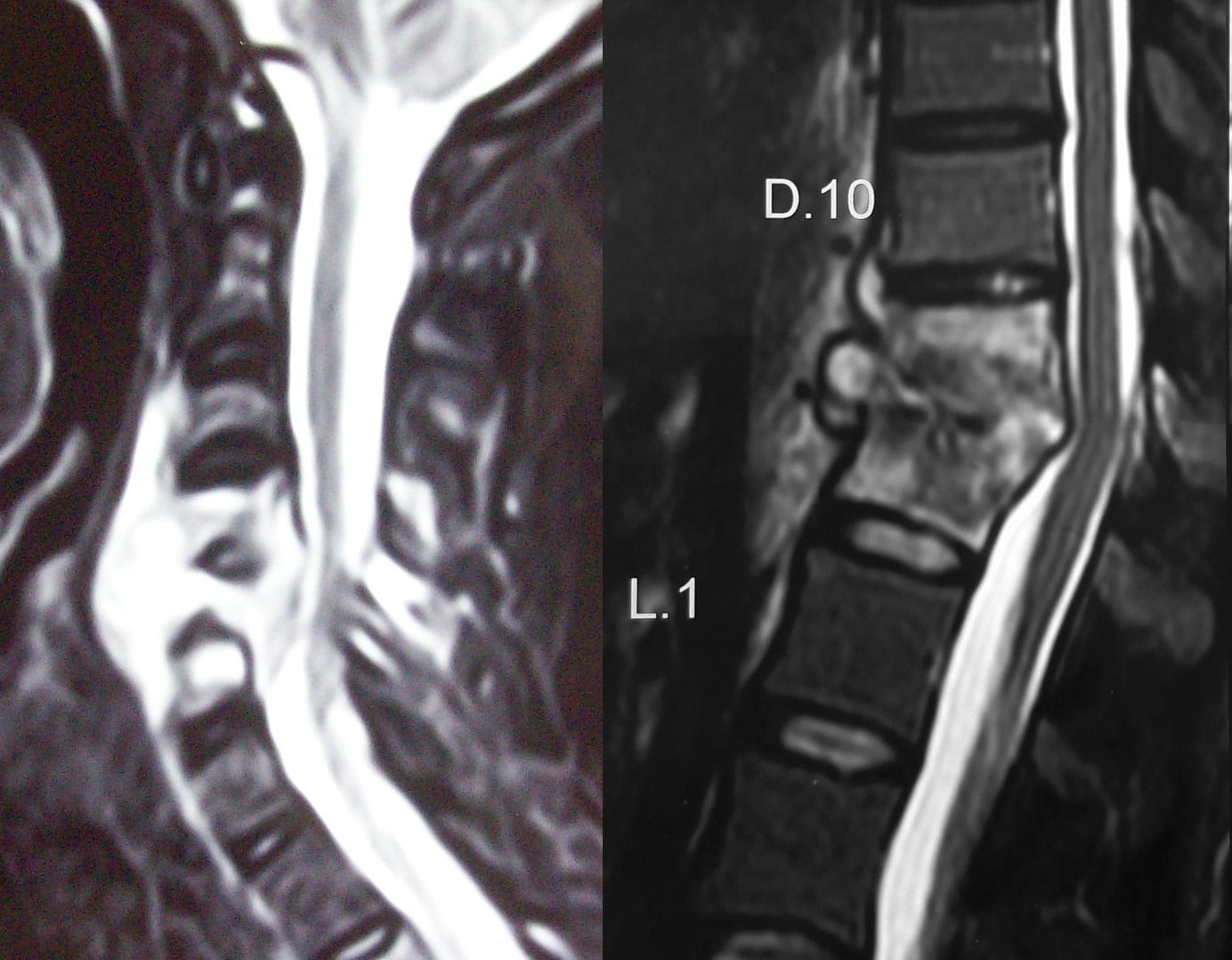
Tuberculosis Of Spine
Video Testimonials
What is the cause of tuberculosis of the spine?
Tuberculosis is an infection caused by a germ named “mycobacterium tuberculosis”. Though this infection most commonly occurs in the lungs, it may sometimes affect the bones of the spine.
How does spinal tuberculosis manifest?
Patients with spinal tuberculosis usually present with pain in the back. In addition, fever, unexplained excessive weight loss and loss of appetite may also be present in some patients. Spinal cord involvement may be signaled by imbalance or clumsiness while walking or frank paralysis.
How does the doctor diagnose spinal tuberculosis?
An accurate history is the most important diagnostic tool. The way the pain started and progressed; specific aggravating and relieving factors of pain; distribution of pain over your body, associated complaints such as weakness or numbness over the lower limbs will be a guide to short listing the possible causes of your low back pain.
A detailed clinical examination by the best spine specialist involves assessment of spinal motion, assessment of your neurology and certain special tests will allow to further narrow down the causes to 2-3 most probable ones. Though this process of history-taking and clinical examination may appear boring and long-drawn, it is the most crucial part towards prescribing the correct treatment to you. So, it is essential to cooperate with your spine specialist or consultant throughout this entire procedure, which gives more information to the doctor regarding your ailment than any other investigation on earth.
Commonly, plain x-rays of the spine may be ordered with some basic blood investigations such as hemoglobin, erythrocyte sedimentation rate [ESR], and liver function tests.
Based on these tests, or sometimes, in the presence of some very significant signs or symptoms, you may be asked by your spine surgeon or spine specialist to undergo MRI scanning. Plain x-rays demonstrate bony features; while MRI demonstrates the spinal cord, its nerve roots, the intervertebral disc between the two bones of the spine. Both these tests are complimentary in nature; doing one does not necessarily mean that the other one is not needed.
Advanced blood investigations in the form of PCR and ELISA may be ordered to confirm the diagnosis in certain cases. In addition, certain doubtful cases may also merit a small procedure of percutaneous image-guided biopsy, generally under local anesthesia, i.e. taking a piece of bone from the involved area using a small needle which is directed towards the involved area under radiological guidance.
A bone scan may be ordered in some instances to better delineate the bony defect and also to detect involvement of any other part of the body. This is a test in which the patient will be asked to drink a liquid medicine that gets absorbed from the stomach and concentrates itself in various parts of the skeleton based on their blood supply and level of activity. This is then detected based on special cameras.
Treatment would depend on the age of the patient, extent of bony destruction, function of the nerves, response to previous nonoperative treatment and lastly, the subjective severity of your pain. The mainstay of nonoperative treatment is the use of antituberculous medications. Adjuvant means of treatment include bed rest for a short period of time, painkillers, muscle relaxants, activity restrictions, liver tonics, vitamin supplements, etc.
Antituberculous medications would need to be taken regularly for a period of at least 6 months. Though the patient would subjectively feel better within just about 1 month of the treatment, taking the full course of medicines is essential to prevent any kind of recurrence of the disease. A common side effect of these medicines is liver dysfunction. Hence, regular monitoring of liver function would be essential. In addition, regular blood tests would need to be carried out at 3-4 weekly intervals so as to monitor the response to treatment.
How should you sleep? You should sleep on your side, either right or left, whichever is comfortable, with a pillow in between your legs. What kind of bed should you sleep on? A cotton mattress is ideal! No need to sleep on hard beds, nor do you need to fall for any kind of so-called “spine-friendly” expensive mattresses sold out in the market! Bed rest would generally not be recommended for more than 3 weeks. In extreme cases, it may be extended up to 3 months. During this period, you should eat, drink and sleep in the bed. Only sponge bath is allowed. Ideally, you should not get up even to visit the washroom; you should use a bedpan or urine-pot. However, if this is too much of an inconvenience, you may be allowed to get up to use the washroom alone.
Though complete bed rest would be prescribed only for a few days to weeks, you would need to have some activity restrictions for a period of at least 12-18 months!! Activities restricted for most spinal patients would include sitting on the floor, bending forwards, lifting weights, smoking, sitting continuously for more than half an hour, using traditional Indian style of toilet commode, driving in a two-wheeler or auto rickshaw or jeep or in any kind of vehicle on bumpy roads.
3-6 weeks following the start of antituberculous medications, based on the extent of recovery, the patient would be started on spinal extension exercises.
You may be prescribed a brace for about 12-18 months. This brace would generally need to be worn at all times other than while lying down.
Surgery would be necessary if there is significant neurological deficit at the time of presentation, severe destruction of the spinal column leading to “instability”, severe deformity of the back, doubtful diagnosis, and failure to respond satisfactorily to the antituberculous medication regime. However, these indications are present in only about 10-20% of all patients with spinal tuberculosis. At the same time, when surgery does become necessary, it becomes a “no-choice” situation, i.e. the last and final resort. Procrastination in these cases would not be advisable since the risks of not doing the surgery when definitely indicated far outweigh the risks of doing the surgery.
Surgery in tuberculosis generally involves stabilizing the spine with some kind of rods and screws along with taking off the compression on the neural elements [nerves]. In some instances, if there is a deformity, it might need to be corrected as well. Surgery in tuberculosis can be done from the front or backside. Surgeries from the backside are most often preferred because these are relatively less demanding on the patient as compared to surgeries from the front side. However, when the disease is very severe or when the compression on the nerves is very severe, surgery from the front may be a “no-choice” situation!
Everything in life carries some inherent risk associated with it. The option for surgery would be offered only if the benefits of surgery significantly outweigh the risks. Rather than asking as to what are the risks of going in for surgery, it would be more prudent to ask as to what are the risks and benefits of getting the surgery done as compared to not getting the surgery done? Spine surgery has had a lot of advances in the past decade or two; there are better imaging facilities like MRI, better surgical instruments, surgical microscope to aid vision in the surgery, computer navigation system to further increase the safety level of surgery, better training and information in an overall sense making spine surgery no longer the taboo that it once was! So, if you have a problem that genuinely requires surgery, there is no point in tying yourself down to the bed for days or months on end; because ultimately life is mobility and mobility is life! Discuss the details of your surgery and its attendant risks with your doctor to quell any fears and to clear any and every doubt of yours! If you so desire, your best consultant for spine or spine specialist can even arrange to give you references of patients who have undergone similar surgeries.
Generally, you would be admitted one day prior to the day of surgery. You would be advised to stay starving after the dinner the previous night. Surgery would generally be carried out the next day morning. Some patients who have undergone the surgery from the front side may require having a tube inserted into their chest so as to allow drainage of the unhealthy blood from the chest. These patients are better managed in the intensive care unit [ICU] for up to 24-48 hours following the surgery. After the surgery, on the 2nd-3rd day, you would be made to walk. Rarely, patients with severe bone damage may be advised bed rest for about 3 months. Some kind of brace may be required in some patients. You may be discharged any where from the 5th to 14th day following the surgery. Sutures [stitches] would be removed generally on the 10th-14th day following the surgery. By this time, most patients are walking around and essentially independent in doing activities of daily life. You would be allowed to take bath 48 hours after the suture removal. For 3-4 weeks, you would be allowed restricted mobilization within the house. During this period, you would be encouraged to increase all your activities in gradual weekly increments. 6 months later, you would be started on spinal strengthening exercises. For 18 months at least, you would not be allowed to bend forwards, lift up weights, travel on 2-wheelers/ auto rickshaws/ jeeps, sit on the floor, or use Indian type of toilet commode. You would have to use the spinal orthoses [belt] for 18 months at least at all times other than lying down and while taking bath. You would not be allowed to smoke for lifelong!
Though you would be up and about, walking about within the first ten days following the surgery, you would be allowed only limited mobilization within the house in the first one month following surgery. Thereafter, if you are having a sedentary job, then you may be allowed to resume work, provided you do not have to travel for a prolonged time on some bumpy road(s). If you were having some job that required some moderate labor, you would be allowed to resume work about three months after surgery. If you were involved in heavy manual labor, it would be wiser to seek some permanent job modification in these situations. Staying off work for more than three months post-surgery is not recommended at all.

